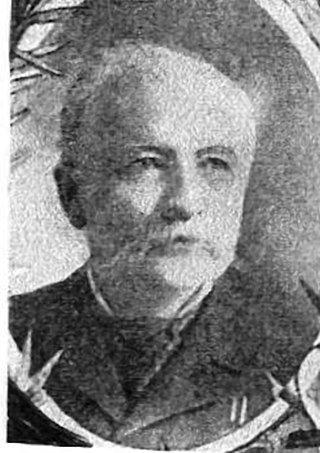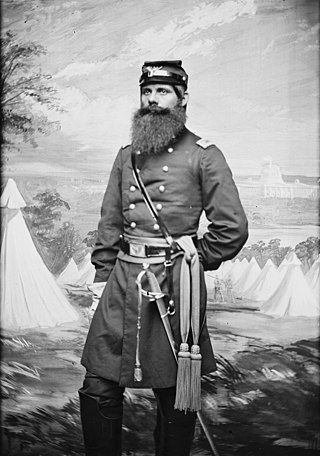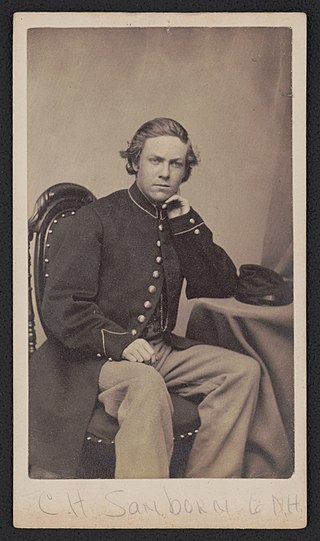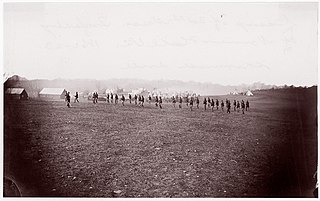
United States Colored Troops (USCT) were Union Army regiments during the American Civil War that primarily comprised African Americans, with soldiers from other ethnic groups also serving in USCT units. Established in response to a demand for more units from Union Army commanders, USCT regiments, which numbered 175 in total by the end of the war in 1865, constituted about one-tenth of the manpower of the army, according to historian Kelly Mezurek, author of For Their Own Cause: The 27th United States Colored Troops. "They served in infantry, artillery, and cavalry." Approximately 20 percent of USCT soldiers were killed in action or died of disease and other causes, a rate about 35 percent higher than that of white Union troops. Numerous USCT soldiers fought with distinction, with 16 receiving the Medal of Honor. The USCT regiments were precursors to the Buffalo Soldier units which fought in the American Indian Wars.

The African American Civil War Memorial Museum, in the U Street district of Washington, D.C., recognizes the contributions of the 209,145 members of the United States Colored Troops (USCT). The eponymous memorial, dedicated in July 1998 by the African American Civil War Memorial Freedom Foundation, commemorates the service of 209,145 African-American soldiers and about 7,000 white and 2,145 Hispanic soldiers, together with the approximate 20,000 unsegregated Navy sailors, who fought for the Union in the American Civil War, mostly among the 175 regiments of United States Colored Troops.

Orlando Bolivar Willcox was an American soldier who served as a general in the Union Army during the American Civil War.
The 10th Vermont Infantry Regiment was an infantry regiment in the Union Army during the American Civil War.

Samuel Everett Pingree was an American lawyer and politician from Vermont. A Republican, he served as lieutenant governor from 1882 to 1884 and governor from 1884 to 1886. Pingree was a Union Army veteran of the American Civil War and received the Medal of Honor for heroism at the 1862 Battle at Lee's Mills.

The 4th United States Colored Infantry Regiment was an African-American unit of the Union Army during the American Civil War. A part of the United States Colored Troops, the regiment saw action in Virginia and North Carolina, taking part in the Richmond-Petersburg Campaign, the capture of Fort Fisher and Wilmington, North Carolina, and the Carolinas Campaign.

Charles Adams Hunter was a soldier in the American Civil War who received the Medal of Honor for valor in action.

The 110th Ohio Volunteer Infantry was an infantry regiment in the Union Army during the American Civil War.
The 122nd Ohio Infantry Regiment, sometimes 122nd Ohio Volunteer Infantry was an infantry regiment in the Union Army during the American Civil War.
The 87th Pennsylvania Volunteer Infantry was an infantry regiment that served in the Union Army during the American Civil War.

The 12th Virginia Infantry Regiment was an infantry regiment mostly raised in Petersburg, Virginia, for service in the Confederate States Army during the American Civil War, but with units from the cities of Norfolk and Richmond, and Greensville and Brunswick counties in southeastern Virginia. It fought mostly with the Army of Northern Virginia.

The 28th Virginia Infantry Regiment was an infantry regiment raised in Virginia for service in the Confederate States Army during the American Civil War. It fought mostly with the Army of Northern Virginia. The 28th Virginia completed its organization at Lynchburg, Virginia, in June, 1861. Its members were raised in the counties of Botetourt, Craig, Bedford, Campbell, and Roanoke.

The 5th New Hampshire Infantry Regiment was an infantry regiment that served in the Union Army during the American Civil War. The regiment sustained the greatest total combat losses of any infantry or cavalry regiment in the Union, with 295 killed and 756 wounded.

The 6th New Hampshire Infantry Regiment was an infantry regiment that served in the Union Army during the American Civil War.

John H. Haight was a United States soldier who fought with the Union Army during the American Civil War as a member of the 72nd New York Infantry. He was recognized with his nation's highest honor for valor, the U.S. Medal of Honor, for the extraordinary heroism he displayed in 1862 during the Battle of Williamsburg, Manassas Station Operations, and Second Battle of Bull Run.
The 2nd New Jersey Infantry Regiment was an infantry regiment in the Union Army during the American Civil War.
The 4th New Jersey Infantry Regiment was an infantry regiment in the Union Army during the American Civil War. Overall, the regiment lost 5 officers and 156 enlisted men killed or mortally wounded and 2 officers and 103 enlisted men to disease during the Civil War. The regiment's first commander, Colonel James H. Simpson, helped lead the 4th N.J through the hardships of the first year of campaigning.
The 3rd Regiment Maryland Volunteer Infantry was an infantry regiment that served in the Union Army during the American Civil War. It was noted for its holding the high ground at the center of the line at Antietam as part of Stainrook's 2nd Brigade, Greene's 2nd Division of Mansfield's XII Corps.
The 143rd Pennsylvania Volunteer Infantry was an infantry regiment that served in the Union Army during the American Civil War.

The 34th Regiment Massachusetts Volunteer Infantry was an infantry regiment that served in the Union Army during the American Civil War.











